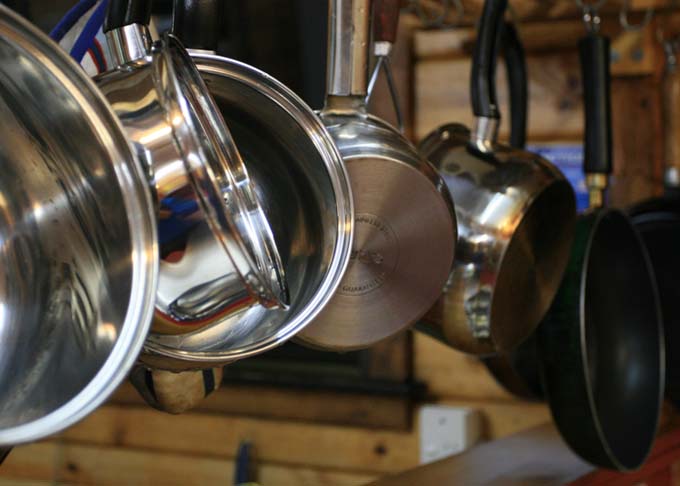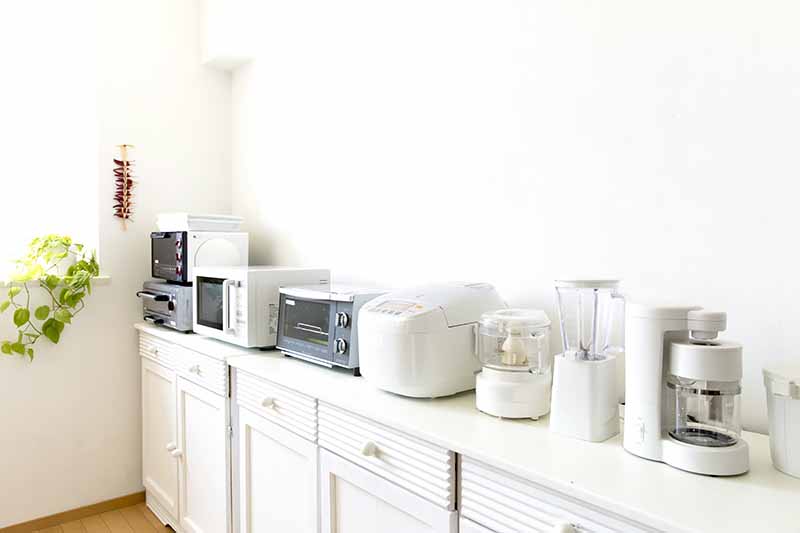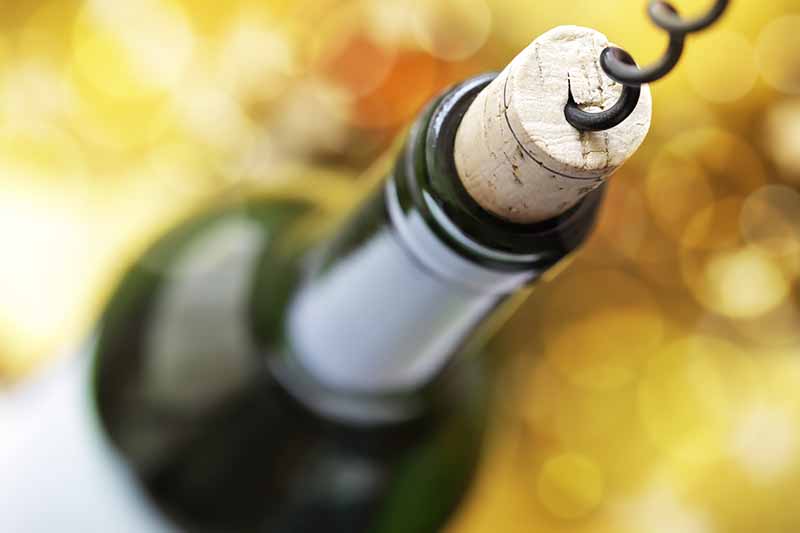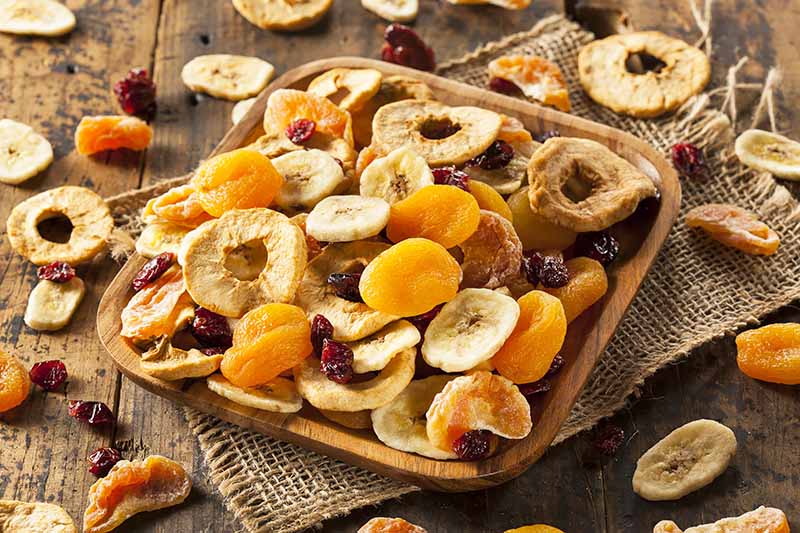We occasionally link to goods offered by vendors to help the reader find relevant products. Some of these may be affiliate based, meaning we earn small commissions (at no additional cost to you) if items are purchased. Here is more about what we do.
Have you ever went into a department store and were overwhelmed by all of the choices of cookware that were on display? I can definitely understand the feeling – especially if you are brand new to home cooking.

I was fortunate enough to work for a company that sold gourmet cooking implements so I learned a lot of useful information. I always had people come in and not understand where to start.
I would usually start asking some questions to start to feel out what kind of cookware would fit their lifestyle. Here are a couple of questions you need to ask yourself before you make a purchase.
Begin by answering a few questions regarding your likes, dislikes, and what kind of lifestyle you lead and may lead in the not so distant future. Cheap cookware won’t last.
Whether it’s nonstick or thin aluminum they both have flaws that make them questionable when deciding to purchase. Why not spend a bit more and buy pans that have the potential to last a lifetime? Much of the decision in cost will come from the answers to these questions:
1. Do you just love spending time in the kitchen preparing gastronomic wonders for family and friends? Upgraditis (the condition commonly occurs when once more and more cooking related “gear”) may haunt you – you’ve been warned.
2. Do you feel a rush of adrenaline when you know you’re having six for Saturday night supper? Good for you! I see copper or All-Clad in your future.
3. Do you get the cold chills and a sinking feeling when you discover it’s your turn to have the gang over? Take some cooking classes, watch some shows, breath, relax, it’ll be all ok. I promise.
4. Do cringe when you have to boil water? Perhaps stick to Hot Pockets in the microwave?
5. Are you a single person living alone or is your home bursting at the seams with people? No need for a huge set if it is just you.
6. Do I want to cut down on the fat that I put in my food? If so you need to consider nonstick.
7. Do I use spray oils on my pans? If so, you need to get an inexpensive set and prepare to purchase sets about every 6 months. Spray oils do a lot of damage on pots and pans. The spray oils that is best reserved for bakeware.
8. Do I have room to store a set of 12 pieces or more? To properly store a set you need to prepare to store lids away from pans so they don’t scratch.
After you have these questions answered you are ready to start on the prowl for the kind that best fits your needs. Below I have a few details about types you may encounter.
Be careful to remember that sales people are there to make a sale and not always there to help make the right choice for you. Just because it is expensive does not mean that it is the right one for you.
Every cook has a passion for the pots and pans they use to whip up gourmet or comfort food creations. But pots and pans are made from several different materials, not all of them adequate to cook foods evenly or efficiently. What are the differences?
To start, the thickness and the type of metal the vessel is made makes a difference in how evenly the heat is distributed to the cooking food. The finish on the metal’s surface also affects how efficiently the cookware performs.
Stainless Steel
To be a good heat conductor, stainless steel needs to have a thick copper or aluminum bottom or be fully clad (aluminum and/or copper smashed between two sheet of stainless steel. High acid foods cooked in stainless steel may cause the steel to leach out unappetizing metals, such as chlorine, iron and nickel.
This type cookware needs a small amount of butter or oils to keep food from sticking. Do not ever use spray oils on this type, it will leave a filmy residue that cause food to burn or stick. Most stainless steel pans can be used in oven. It is recommended to wash with soap and water. You also can use Bar Keepers Friend – a specialized cleaner – for a more polished look. This type is usually not dishwasher safe (but there are exceptions).
Aluminum
Much of the cookware sold in the United States is aluminum. This metal is also a great heat conductor. There is a minor risk of the metal leaching into foods if you constantly deep scrape or gouge the sides or bottoms of the pans.
Thin gauge aluminum pans will warp if subjected to rapid temperatures changes, such as going from a hot stove to a cold water bath. However, thick gauge aluminum examples have excellent heat distribution and will not warp easily.
Lesser quality aluminum products will stain. Hard water and potato starches are major culprits. To clean stained aluminum, fill the pan with water, add one tablespoon of cream of tartar and boil for 15 minutes. Then wash the pan thoroughly before using it again.
Nonstick
Made from aluminum, this cookware is good for the low-fat chef because you don’t have to add fat to keep things from sticking, than this is your choice. This means that your fat intake will be lower because you are not adding more due to sticking.
Do not ever use spray oils on the nonstick surface, it will break down the nonstick coating and it will cause food to start sticking. Nylon cooking utensils should be used.
A nonstick pan can be used in ovens but not in broilers due to the heat. Cleaning is easy with soap and water or use a Dobie pad. This type is usually not dishwasher safe. Read Foodal’s complete guide now.
Hard Anodized
Again normally made from aluminum, this cookware needs a small amount of butter or oils to keep food from sticking. Do not use the spray oils as it will damage the anodized coating.
These pans can go in the oven but not broiler.
Recommended cleaning is to use soap and water. You can also use a Scotchbrite pad. You can find special cleaners for the outsides to keep it looking good.
Glass
Rapid temperature changes cause glass to crack or break such as when pouring boiling water into even a room temperature glass container. Corning Ware or Pyrex will resist most such stresses, so choose wisely if you prefer cooking or baking with glassware.
Remember, too, that when baking in glassware, you should lower the temperature by 25 degrees.
Cast Iron
This cookware is gets better with age, meaning the more seasoned the better. Cast Iron is good on the stove or in the oven. It can take a beating that none of the others can take,
Cast iron conducts heat fairly well. And though certain acidic foods may cause the iron to leach, it is not enough to be nutritional, let alone harmful.
Because the surface metal of cast iron cookware is porous, the surface needs to be “seasoned. Rub the cooking surface with Canola oil and heat it in an over at 300°F for about an hour. The oil will seal the pores and add a minimal nonstick surface. It also resists water and the formation of rust.
These skillets are definitely not dishwasher safe. Normally, I just wipe out used oil and gunk with a paper towel while the frying pan is still warm.
If that doesn’t work for you, your cast iron should be washed with just water so that soap won’t break down the seasoning that has been created and then dried immediately (I usually just use low heat on the stove).
Should your frying pan show signs of rust, it can easily be removed by rubbing the area with a sand and vegetable oil mix. Wash thoroughly before using it again. Click here to read more about cast iron.
Enameled
Either based on cast iron or much thinner rolled steel, enameled cookware was one of the original nonstick coatings. The enamel is fused powdered glass on a metal surface. Though corrosion -resistant, the cookware can chip if gouged with a sharp utensil or hit against another object. It can even shatter if subjected to rapid temperature change.
Carbon Steel
Similar to Cast iron, these frying pans and skillets require seasoning but they are very good at what they do – frying and sautéing. Not dishwasher safe. Read more about Carbon Steel.
Copper
These cooking vessels are among the most expensive and are definitely the best for most applications. They transfer the heat very well from you stove to your food though they are not suitable for induction ranges.
Many professional chefs swear by copper. It’s a marvelous heat conductor. However, copper pans should have a liner of tin or stainless steel to prevent the metal from leaching into foods.
Foods with high acid content will release copper ions, so that metal liner needs to be replaced occasionally. Also, the copper must be kept clean. Black soot or carbon deposits will affect the distribution of heat.
Avoid cheap copper coated cookware. If it’s inexpensive, the copper that is covering the bottom of that stainless steel pan is nothing more than a thin flash; not enough to distribute heat efficiently or evenly. “Real” copper cookware distributes heat uniformly on the sides of the pans as well as on the bottom.
Thicker is definitely better (as is the case with all cookware). Click here to read more about copper.
Cookware Handles
Handles on cookware are as varied as the different types pots used. Again it’s about pros and cons and what appeals to you. Plastic handles should not be used in ovens over 350°F, however, the handle doesn’t heat up while cooking.
A plastic handle may break which is no small thing when carrying a hot pan of soup. Wooden handles won’t burn your hand since they don’t heat up on the stove, but you should not put cookware with wooden handles into a dishwasher. Solid metal handles get hot requiring a pot holder to carry from one place to the next.
On the upside, cookware with solid metal handles can be put in the over or under the broiler with no problem. The dishwasher holds no worry for cookware with metal handles. A metal handle won’t break and in fact, some come riveted giving them added strength.
You may find cookware that comes with removable handles that fit into various pieces within the set. The handle doesn’t always fit tightly from one pan to the next.
Cool-Touch Handles – There are some cookware that comes with a cool-touch handle feature that adds great value to your pans. Cool – touch means that if pan is on stove the handle should be cool to the touch for easy handle. If the pan is in the oven the cool-touch does not work.
Conclusion
There are several brands out there to choose from ranging from inexpensive to outrageous. One thing that you need to remember – if the bottoms seem too thin in weight than you might want to look at another style.
I have seen some of the cheap cookware sets that will only last a few months under good conditions and it was too thin to protect the food from burning. Cookware should have good thick bottoms to ensure that the heat source spreads out throughout the cooking surface.
Sets of cookware range in price from a low end of $50, to a middle of the road price of $200, and on up to thousands.
Regardless of the cost, before buying cookware that lasts get a feel for what’s out on the store shelves. You should ask yourself these question prior to buying.
Is the pot or pan too heavy?
Would you prefer something of a lighter weight?
Look at the handle. A riveted handle is the absolute best, you know it’s sturdy enough to last. Turn the pan or skillet over, look at the bottom, is it flat?
Can you feel the same gauge metal both inside and outside of the cookware? If you’re not sold yet, try buying one small piece to take home and use before buying a set.
Once you’ve decided which way to go, nonstick or uncoated, it’s time to decide what pieces to purchase. Sets are the better bargain.
Most sets come with five commonly used pieces which may include: a stockpot with a lid, a 2-3 qt cooking saucepan with lid, 9.5-11 inch fry pan, most have another small omelet skillet and smaller sauce pan.
Whether you choose to go the nonstick, less expensive route or if paying more for a durable set that lasts a life time tempts you, having some knowledge before buying cookware that lasts will help you purchase the product that suits you best.
Each type of cookware has its advantageous and disadvantages. A lot of which kind to choose depends largely on what kind of cooking a chef indulges in. Buy quality pots and pans, and your meals are bound to please everyone.
About Lynne Jaques
Lynne is a stay-at-home mother of two boys. As a former US military officer and the spouse of an active duty US military member, Lynne enjoys traveling the world (although not the moving part!) and finding new cuisine and methods of preparing food. She also has the habit of using parenthesis way too much!




My Case Study: I remember trying to cook pancakes using a stainless steel pan, bad bad mistake…1. the heat was at an all time high 2. i was using oil…how dumb i was {cheeky smile}…for starters the kitchen looked like an aftermath of a fire that had raged through, the smoke was heavy and i trashed all my pancakes {they were black!!! cooking gone bad!!}…i was extremely disappointed…i decided to search online and put my woes at ease, that’s when i stumbled on the truth, with stainless steel as the article states requires small amounts of butter…in my case, for pancakes i use margarine, from that time henceforth, cooking pancakes is my favorite past-time :)…thank you still for the tips/guides to the best cookwares…when thinking of buying them in the future, i ‘ll always visit this page 🙂
You can buy a lot of this cookware at Sears. I love shopping their. I love cooking as well. Stainless steel is perfect for me because I like to fry and use a lot of oil.
Unfortunately am not in that part of the world…near the nearest Sears store… 🙁 ….therefore in my case i can only shop online, Amazon preferably…thank you for the heads up still in that regard @ suegiplaye, who knows i might end up living there one day 😉 …
Right now all I have is a fairly inexpensive set of non-stick pans. I am fairly happy with them, but I find that they don’t always work for what I want. For example, I have a lot of difficulty searing in a non-stick pan. What type of stainless steel pan do you recommend as a good all around solution for when non-stick just won’t do the job? Also, how do you get a steel pan clean? One of the reasons I use non-stick is ease of cleaning.
Thank you for this list. I always have a problem baking I bought nonstick pans and cupcake batter still sticks. The cookie sheets even with parchment paper. The paper burned on me one time. Now I know why, I still used cooking spray. Or I would rub oil on the pan or flour. This is very helpful.
Someone once told me, its best to dust/sprinkle in some flour on the non-stick pan {that is after layering/smearing/applying/greasing the non-stick baking pan with butter all around} before putting in the cake batter/paste and also being careful/cautious with how much heat you are using whilst baking, or else your whole effort will be a total backfire 🙁 …i must say that advice works for me every-time 😉 .
Thanks for the detailed review. I’ve never wanted to buy expensive cookware for fear of ruining it. I always figured if it’s cheap enough, it will be cheap enough to replace when it breaks. But if I buy something expensive and I somehow ruin it after a year, I’ll be really upset. Hopefully, I can take your advice into consideration
I hope to one day be able to throw out everything except my cast iron skillets ,and a trusty pot that I inherited from my aunt (don’t know what it is)- and start completely over. For right now though my cookware is an odd assortment of cast iron, non stick, and other ‘cheap’ stuff. I’ve got to do better soon.
I have a good mix of most of these pans. Some ones I want to try are carbon steel and copper. I like they way they look and I think the materials could make cooking certain dishes a little easier. It’s easy to push getting new cookware to the bottom of my money priority list but I have to remember how much I use them every day.
#1 thing I learned from this article is not to use spray on oils. No wonder some of my pans break down so quickly! I feel like I’m buying new pans every few months. I really want to try cooper ones, too bad they are so expensive. They sound wonderful!
Thanks for the helpful information! There is so much that I don’t know such as, not to use oil spray on non-stick pan and about seasoning a cast iron skillet. I will definitely be using this when I make my next cookware purchase. I love to cook every day, but only have two people in my house so I need to take that into consideration when making my purchase.
Currently I have Various Non-Stick Teflon, Stainless Steel, Glass, Cast Iron and Aluminum Pots, Pans and Trays. I find the trickest part of using them is cleaning them. Cast-Iron and Teflon are the best to clean, although I find I am using glass trays more.
I use the non stick cooking spray for everything! I had.no idea it was bad for your pans! I guess I’m going to have to use a new method now.
Instill say the cast iron is what works for me. I really am just too used to it to quit now. Some other pans did tempt me to switch, it I’m staying strong on the name of love –for my cast iron lol
I don’t have a big cookware set, just the basics + a few extra and special ustensils which I use from time to time. I’m not that keen on buying new stuff since I have everything I need, but if I see something that may be useful in the near future I make sure to grab it.
So right now I am in need of a really good set of pots and pans. I do not have any matching sets, and I am missing some essential pieces like a stock pot for one. I had no idea so much goes into deciding which is the best for my family. I also have a preteen who is interested in cooking. I have made great notes and am thinking about a stainless steel set.
Nowadays I enjoy using thick-bottomed pans, and also ceramic ones. Of course skillets are the best in many way, but I think teflon covered things somehow got old.
Ceramics are the new things, and If I had all the money in the world I would use them and buy them all
Please would you tell me which is the best type of pan for healthy cooking? The price is no problem. Thank you.
I think stainless steel cookware is fit for everyone. Because stainless steel is famous all over the world, the main reasons being that it is strong, flexible and also easy to use. It would be very long lasting.
Surgical steel pans my friend, they are the best for your health
I’m looking to get a new cookware set. I want it to be good quality and last a long time, so I appreciate this article providing some information. It’s so great that there are non-stick surface options.
I’m glad you mentioned to consider whether or not you use cooking oils because that affects what you will choose for cookware. I need to get some pots for my daughter, and I want to make sure I choose the right kind. I think I will go with stainless steel because I like the look of it.
Hello! My mom lives alone but loves to cook for people; keeps her busy. She is tough on her pots and pans and doesn’t use the correct utensils; thus they get scratches. She isn’t cooking everyday but I am interested in buying her a basic set that can handle cooking a few times a week and what is the best type of utensils to use; I guess for any type of pan? She is limited on space for storage. She currently keeps her older set in the stove drawer. She now has ceramic but it was scratched within a few months. My pocket-book can handle a smaller set; I very much appreciate all the information, especially the cooking-spray. I don’t use it but I have friends, etc., that do. Great Article!
I’m also guilty of sometimes using metal utensils that can scratch my cookware. I’ve found that one of the best options is a sturdy silicone spatula. Silicone is soft to the touch, but it’s also extremely heat resistant. These are also available in a spoon shape, slotted or solid. I also have a set of bamboo cooking utensils that are durable and sturdy, while being much more gentle on the surface of my pots and pans.
Hard-Anodized Nonstick Cookware is my best choice because It is dishwasher safe and suitable for all stovetops. Overall the article was very informative. Thanks!
Wonderful article! My husband bought me a set of SaladMaster waterless cookware back in 1977. It is heavy, 3-ply stainless and cost around $500 back then! I still have the set today and use it daily. I must say, with all my experience, I have never known NOT to put spray oils in nonstick pans. Now I understand why my nonstick fry pans have to be replaced so often. I also never knew about carbon steel for egg pans. I always wondered what the “chefs” use to make omelets so beautifully. I’m in the market for some new fry pans and think I’ll try a decent set of carbon steel and make sure it is seasoned properly. I still use my Mom’s big cast iron fry pan for many things. I don’t use sand, but Kosher or Sea salt and oil to clean it when I get messy. Works well! Thanks again!